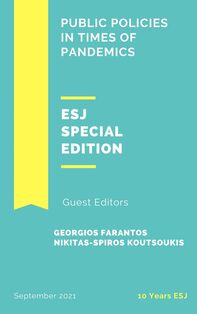SEIMR/R-S. General Epidemic Simulation Model Multi-Infected States - Multi Sociodemographic Segments - Multi-Region Mobility. Theory
Abstract
SEIMR/R-S corresponds to a generalized mathematical model of pandemics that enhances traditional, aggregated simulation models when considering inter-regional impacts in a macro region (conurbed); SEIMR/R-S also considers the impact of modeling the population divided into sociodemographic segments based on age and economic stratum (it is possible to include other dimensions, for example: ethnics, gender, … ). SEIMR/R-S is the core of the SEIMR/R-S/OPT epidemic management optimization model that determines optimal policies (mitigation and confinement) considering the spatial distribution of the population, segmented sociodemographically and multiple type of vaccines. The formulation of SEIMR/R-S/OPT is presented by Velasquez-Bermudez (2021a) that includes the modeling of the vaccination process. SEIMR/R-S can be understood and used by any epidemiologist, and/or physician, working with SIR, SEIR or similar simulation models, and by professionals working on the issue of public policies for epidemic control. Following the theory presented in this document, ITCM (Instituto Tecnologico de Ciudad Madero, México) implemented the SEIMR/R-S epidemic model in a JAVA program (Velasquez-Bermudez et. al, 2021). This program may be used by the organizations that considers the SEIMR/R-S will be useful for management the COVID-19 pandemic, it is presented by VelasquezBermudez et al. (2021).
Downloads
Metrics
PlumX Statistics
Copyright (c) 2021 Jesus Velasquez-Bermudez

This work is licensed under a Creative Commons Attribution-NonCommercial-NoDerivatives 4.0 International License.








